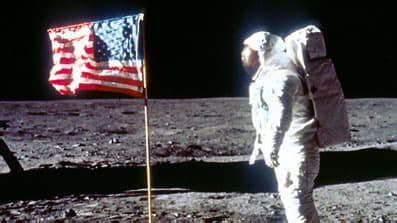The attempt failed. The target satellite exploded as it separated from its main rocket. America's space agency decided to move forward. It would launch the next in its Gemini series. Then someone had an idea: why not launch both Geminis. The second one could chase the first one, instead of a satellite. Again, things did not go as planned. It took two tries to launch the second Gemini. By that time, the first one had been in orbit about eleven days. Time was running out. The astronauts on the second Gemini moved their spacecraft into higher orbits. They got closer and closer to the Gemini ahead of them. They needed to get within six hundred meters to be considered successful.
After all the problems on the ground, the events in space went smoothly. The two spacecraft got within one-third of a meter of each other. The astronauts had made the operation seem easy. In January, nineteen fifty-nine, the Soviets launched a series of unmanned Luna rockets. The third of these flights took pictures of the far side of the moon. This was the side no one on Earth had ever seen. The United States planned to explore the moon with its unmanned Ranger spacecraft. There were a number of failures before Ranger 7 took pictures of the moon. These pictures were made from a distance. The world did not get pictures from the surface of the moon until the Soviet Luna 9 landed there in February, nineteen sixty-six. For the next few years, both the United States and Soviet Union continued their exploration of the moon. Yet the question remained: which one would be the first to put a man there. In December, nineteen sixty-eight, the United States launched Apollo 8 with three astronauts. The flight proved that a spacecraft could orbit the moon and return to Earth safely.
The Apollo 9 spacecraft had two vehicles. One was the command module. It could orbit the moon, but could not land on it. The other was the Lunar module. On a flight to the moon, it would separate from the command module and land on the moon's surface. Apollo 10 astronauts unlinked the Lunar module and flew it close to the moon's surface. After those flights, everything was ready. "Twelve, eleven, ten, nine ... ignition sequence start ... six, five, four, three, two, one, zero. All engines running. Lift-off. We have a lift-off. Thirty-two minutes past the hour. Lift-off of Apollo 11." On July sixteenth, nineteen sixty-nine, three American astronauts lifted off in Apollo 11. On the twentieth, Neil Armstrong and Edwin Aldrin entered the Lunar module, called the Eagle. Michael Collins remained in the command module, the Columbia. The two vehicles separated. It was a dangerous time. The Eagle could crash. Or it could fall over after it landed. That meant the astronauts would die on the moon.

Millions of people watched on television or listened on the radio. They waited for Armstrong's message. "Houston, Tranquility Base here. The Eagle has landed." "The Eagle has landed." Then they waited again. It took the astronauts more than three hours to complete the preparations needed to leave the Lunar module. Finally, the door opened. Neil Armstrong climbed down first. He put one foot on the moon. Then, the other foot. And then came his words, from so far away: "That's one small step for man. One giant leap for mankind." That's one small step for man. One giant leap for mankind. "Man on the moon. Oh, boy! Whew, boy!" "OK, were gonna be busy for a minute." CBS television newsman Walter Cronkite shared the excitement that he and so many people felt as man first walked on the surface of the moon. Later, Cronkite would remember the historical significance of that moment in nineteen sixty-nine. "It's hard, I think, to imagine our emotions at the moment. It really was something that had to grip you. It was as if you could have stood at the dock and waved goodbye to Columbus. You knew darn good and well that this was the real history in the making."
Armstrong walked around. Soon, Aldrin joined him. "They're setting up the flag now." The two men placed an American flag on the surface of the moon. They also collected moon rocks and soil. When it was time to leave, they returned to the Eagle and guided it safely away. They reunited with the Columbia and headed for home. The United States had won the race to the moon. "The thing that made this one particularly gripping was that sense of history -- that, if this was successful, this was a date that was going to be in all the history books, for time evermore. I think we sensed that at the time, sitting there at the Cape (Canaveral), watching that great beast get on its way, that this was it."












